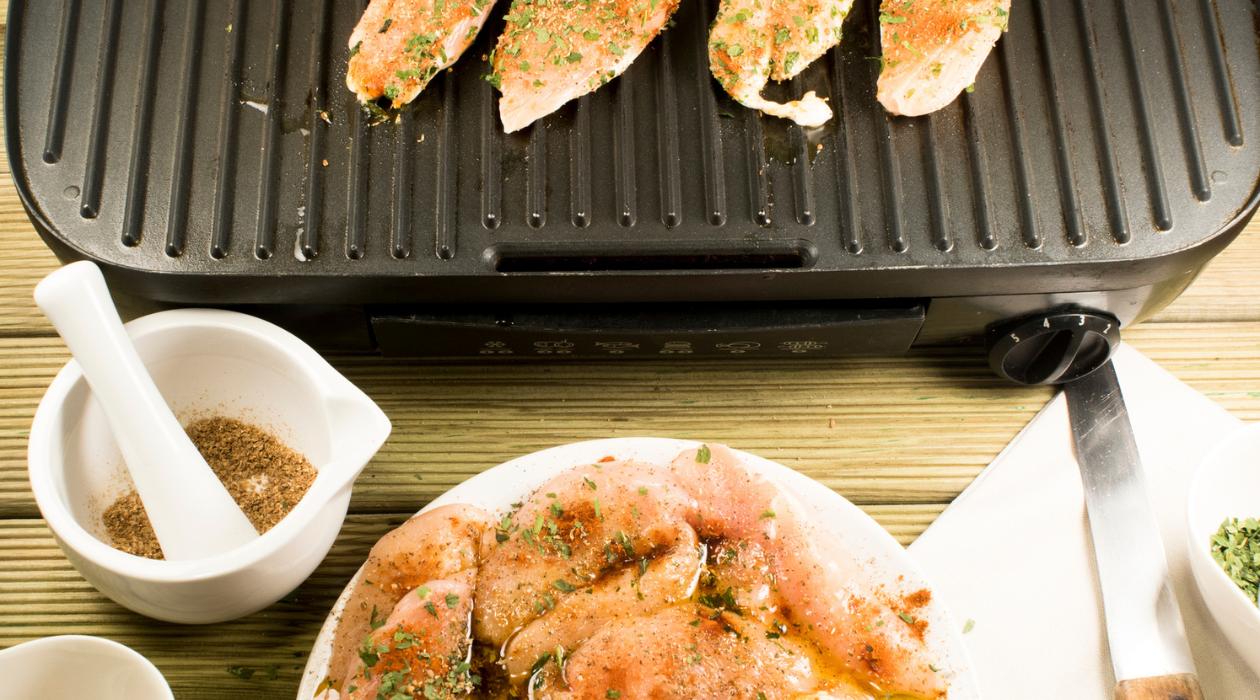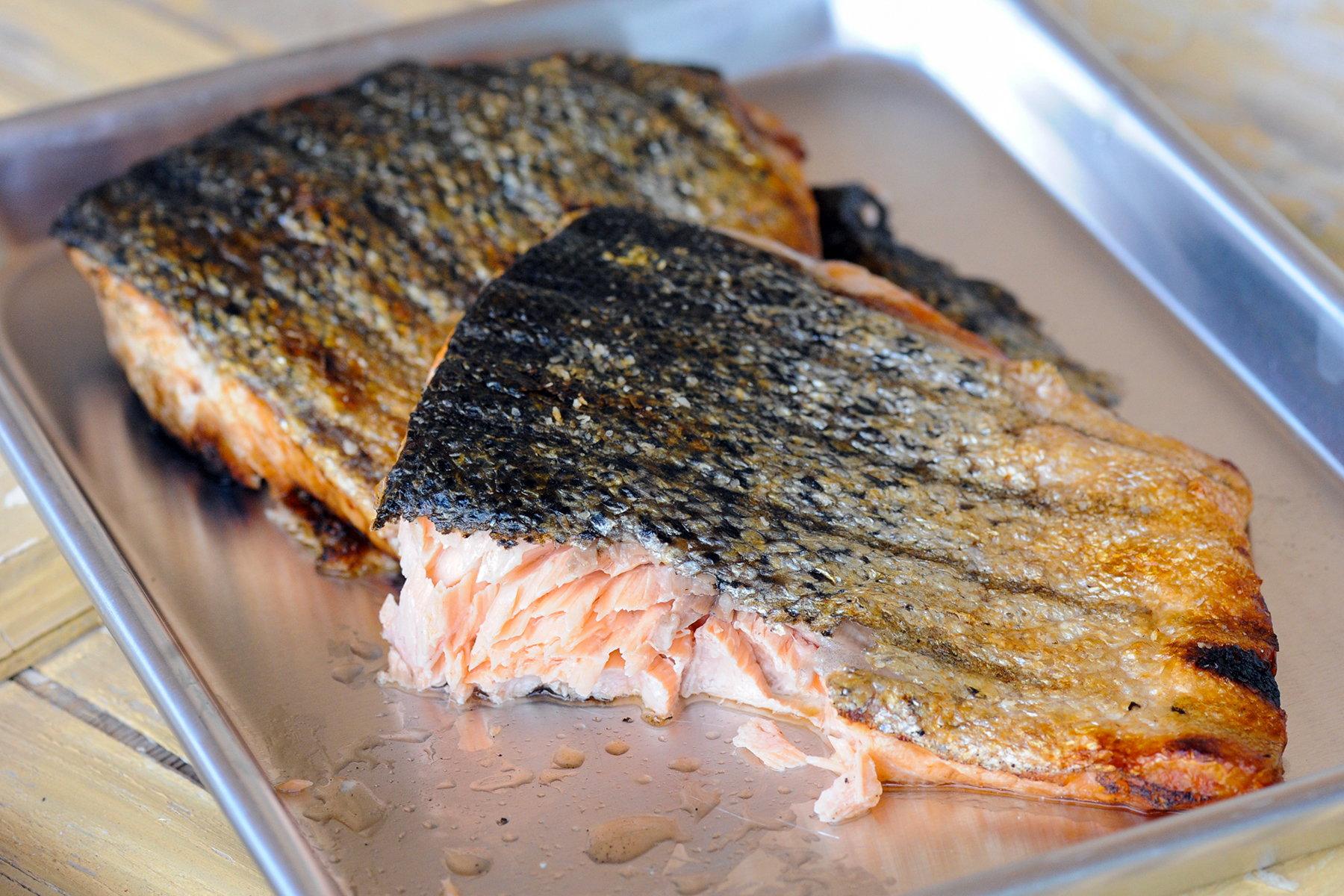Are you afraid to grill fish? A lot of people I know are. They tell me that it falls apart after sticking to the grill or it turns out rubbery.
If you follow my advice and BBQ tips below, you’ll be grilling up a fish like a pro.
Before we start, there are different kinds of fish that can be grilled, and everyone has their own favorites. While I love Chilean sea bass and halibut, others love salmon and tilapia. My mother-in-law can’t get enough catfish, but she passes on mahi mahi.
I’ve categorized this popular list of fish varieties based on their taste, health benefits and price.
I’m sure you’ll find a type of fish that you love. If not, just head on over to my smoked brisket page :).
The taste of fish is often categorized five ways. It can either be fishy, mild, buttery, steak-like or muddy.
When fish is described as tasting fishy, it means that it has an overpowering, strong flavor. Mild fish, on the other hand, has very little flavor at all. Most white fish fits this category.
Buttery fish is usually mild, but it is also rich. Steak-like fish is meatier with a firm texture. And muddy-tasting fish comes from fish that feed along the bottom of bodies of water.
It’s low in calories, high in protein, low in saturated fat, and full of vitamins, minerals, and Omega-3 fatty acids. Fish is a very healthy source of protein.
For better heart and brain health, eating 3 grams of Omega-3 fatty acids every day can lower blood pressure and inflammation. It can also lower the risk of some types of cancer.
The nutrition information below was compiled from the U. S. Department of Agriculture FoodData Central and is based on a 100-gram serving.
There are several factors that influence the price of fish. These can include seasonality, your proximity to oceans and lakes, supply and demand, processing, and quality and sustainability.
Non-filet whole fish usually costs less, unless they come from another country, in which case they may cost more.
Grilling fish on a gas grill can seem intimidating, but it doesn’t have to be. With a few simple tips and tricks, you can grill fish like a pro and enjoy delicious, flavorful seafood meals all summer long.
Getting Started
The first step is choosing the right fish for grilling. Opt for firmer, flaky white fish like cod, halibut, or snapper. Fattier fish like salmon and tuna also hold up well on the grill. Avoid more delicate fish like sole or tilapia that are prone to falling apart.
When buying fish, look for bright clear eyes, shiny flesh, and a clean smell – this indicates freshness. Allow 1/4 to 1/2 pound of fish per person. Boneless fillets or steaks 1-inch thick or less work best.
Before grilling rinse the fish and pat dry with paper towels. Oil helps prevent sticking so brush both sides with a high smoke point oil like avocado, grapeseed, or canola oil. Season simply with salt, pepper, lemon, herbs or other spices. Allow the fish to marinate for 15-30 minutes before grilling.
Heating the Grill
- Preheat your gas grill on high for 10-15 minutes. This ensures the grates are hot enough to sear the fish and prevent sticking.
- Just before grilling, use a grill brush to scrape the grates clean. Then brush them with a bit of oil.
- Turn the heat down to medium-high, around 400°F. The grill should be hot but not blazing.
Placing and Cooking the Fish
- Place the fish diagonally across the grates, so it doesn’t slip through.
- For fillets, cook skin-side down first. Hold the fillets in place with a spatula for just 1-2 minutes until they firm up enough that you can let go.
- Close the grill lid while cooking. This traps heat and cooks the fish more evenly.
- Cook fillets or steaks for 4-8 minutes per 1/2-inch thickness, until it flakes easily with a fork. Fattier fish like salmon or tuna may take a couple minutes longer.
- Carefully flip the fish only once during cooking with a thin spatula.
- For whole fish or thicker fillets, move them to indirect heat, off to one side of the grates to finish cooking through without burning.
- Fish is done when it reaches an internal temperature of 145°F. The flesh should flake easily and look opaque throughout.
Common Mistakes
Avoid these common grilling mistakes for the best results
- Putting fish on a grill that’s not hot enough. This increases sticking.
- Overcrowding the grill. Leave space between pieces so steam can escape.
- Flipping fish more than once. Just one turn is all you need.
- Pressing down on fish while cooking. Let it cook undisturbed.
- Overcooking. Check thickness and remove fish as soon as it flakes and is opaque.
Tips for Specific Fish
-
Salmon – Go for center-cut fillets. Cook skin-side down first. Salmon is naturally fatty and holds up well on a grill.
-
Tuna – Choose thick tuna steaks and sear quickly over high heat just until browned outside but still pink inside, 2-4 minutes per side.
-
Shrimp – Peel, devein, and thread onto skewers to prevent loss through the grates. Grill quickly for 2-3 minutes per side.
-
Whole fish – Stuff the cavity with lemon and herbs. Score sides before grilling. Cook over indirect heat for best results.
-
Fish kebabs – Soak wood skewers before using. Thread fish chunks between vegetables. Grill quickly over direct heat, turning once.
-
Fish tacos – Use firm fish like mahi mahi or cod cut into strips. Grill with taco seasoning. Finish in tortillas with salsa, cabbage, avocado.
Serving Suggestions
Grilled seafood pairs well with bright, fresh flavors. Try serving with:
- Lemon or lime wedges
- Herbs like parsley, cilantro, dill
- Diced tomatoes or salsa
- Rice, couscous, quinoa, or pasta salad
- Steamed vegetables like asparagus, broccoli, or green beans
- Mixed salad greens tossed in a vinaigrette
So fire up that gas grill and enjoy restaurant-quality seafood at home this summer. Just follow these simple tips for grilling fish to tender, flaky perfection.

Common fish varieties good for grilling
- Taste: Mild and buttery
- Good for you because it’s low in fat (2g), high in protein (15g), and high in Omega-3s 7g).
- Price: $15/lb
- When you grill it, put the whole thing on the grill while it’s still whole.
- Taste: Muddy
- Good for you because it’s low in fat (6g), high in protein (15g), and high in Omega-3s 3g).
- Price: $9/lb
- How to Grill It: Fry or grill nuggets or filets on a grill grate.
- Taste: Mild
- Health Benefits: Low in fat (. 25g), high in protein (20g), low in Omega-3s (. 05g).
- Price: $16/lb
- How to Grill It: Grill filets on grill grate
- Taste: Mild and buttery
- Good for you because it’s low in fat (6g), high in protein (20g), and high in Omega-3s 5g).
- Price: $30/lb
- How to Grill It: Put filets on a grill grate or a cedar plank and grill them.
- Taste: Mild and buttery
- Good for your health: it’s low in fat (1g), high in protein (18g), and low in Omega-3s.
- Price: $10/lb
- How to Grill It: Put filets on a grill grate or a cedar plank and grill them.
- Taste: Slightly fishy
- Good for your health: it’s low in fat (5g), high in protein (22g), and not too high in Omega-3s (1g).
- Price: $15/lb
- How to Grill It: Put filets on a grill grate or a cedar plank and grill them.
- Taste: Mild and steak-like
- Health Benefits: Moderate in fat (6. 5g), high in protein (20g), high in Omega-3s (1. 6g).
- Price: $21/lb
- How to Grill It: Grill filets on grill grate
- Taste: Slightly fishy
- Good for your health: it’s low in fat (2g), high in protein (20g), and low in Omega-3s. 6g).
- Price: $10/lb
- How to Grill It: Either put the filets on the grill grate and grill them or fry them outside.
- Taste: Slightly fishy
- Good for you because it’s low in fat (6g), high in protein (20g), and high in Omega-3s (2g).
- Price: $11/lb
- How to Grill It: Either put the whole trout on the grill grate and grill it or fry it outside.
- Taste: Slightly fishy
- Good for your health: it’s low in fat (5g), high in protein (23g), and not too high in Omega-3s (1g).
- Price: $30/lb
- How to Grill It: Grill steaks on grill grate
- Taste: Slightly fishy
- Good for your health: it’s low in fat (1g), moderate in protein (15g), and low in Omega-3s. 2g).
- Price: $10/lb
- How to Grill It: Cook it in a Dutch oven or on a grill.
- Taste: Mild and buttery
- Good for your health: it’s low in fat (1g), high in protein (17g), and low in Omega-3s. 3g).
- Price: Varies from $20-150/lb
- How to Grill It: Grill in shell
- Taste: Muddy and slightly fishy
- Good for your health: it’s low in fat (1g), high in protein (20g), and low in Omega-3s. 2g).
- Price: Seasonal
- How to Grill It: Grill in shell
- Taste: Mild and buttery
- Good for your health: it’s low in fat (1g), high in protein (16g), and low in Omega-3s. 2g).
- Price: $11/tail
- How to Grill It: Grill in shell
- Taste: Slightly fishy
- Good for your health: it’s low in fat (2g), protein (12g), and Omega-3s. 4g).
- Price: $8/lb
- How to Grill It: Cook it in a Dutch oven or on a grill.
- Taste: Mild and buttery
- Health Benefits: Low in fat (. 5g), low in protein (12g), low in Omega-3s (. 1g).
- Price: $33/lb
- How to Grill It: Grill on grill grates or griddle
- Taste: Mild and buttery
- Health Benefits: Low in fat (. 5g), high in protein (20g), low in Omega-3s (. 1g).
- Price: Varies based on size ~$15/lb
- How to Grill It: Put it on grill grates with or without the shells.
Believe it or not, alligator is classified as seafood, so I included it in this list.
- Taste: Mild and steak-like
- Good for your health: it’s low in fat (2g), high in protein (21g), and low in Omega-3s. 4g).
- Price: $22/lb
- How to Grill It: Grill on grill grates
- Taste: Mild and steak-like
- Health Benefits: Low in fat (. 8g), moderate in protein (12g), low in Omega-3s (. 2g).
- Price: $27/lb
- How to Grill It: Steam then grill on grill grates

Other ways to cook fish
If you don’t care about grill marks and smokey taste, cover it with foil or cook it in a dish with foil. This keeps the moisture locked in, so you have nice and flaky fish. Make sure that all of the other things in your bag or baking dish will also be ready in 15 minutes. Fish cooks fast.
One bottle of beer and one and a half cups of flour always make the best batter. Dunk the seasoned fish in the batter and fry in one-inch of 350-degree oil. Serve it with malted vinegar or tartar sauce and another bottle of beer.
